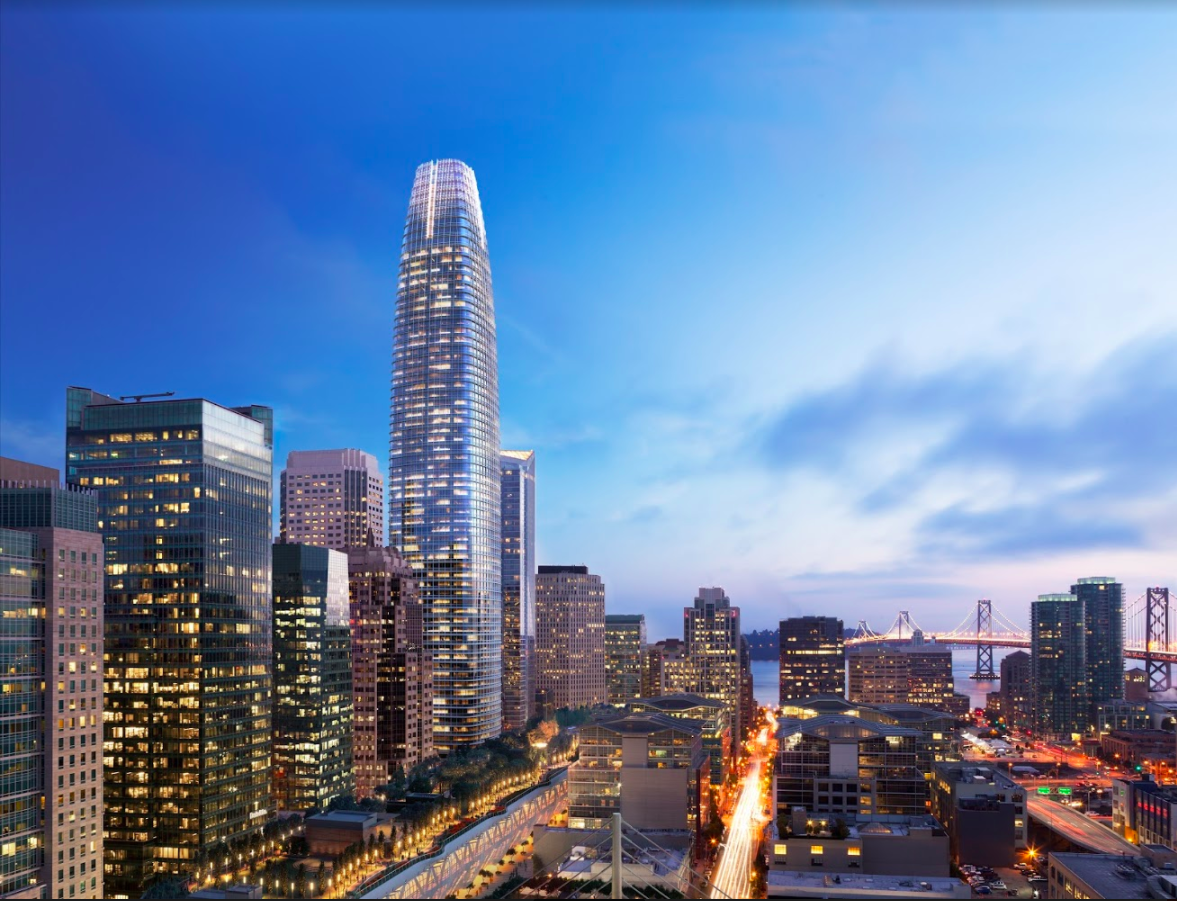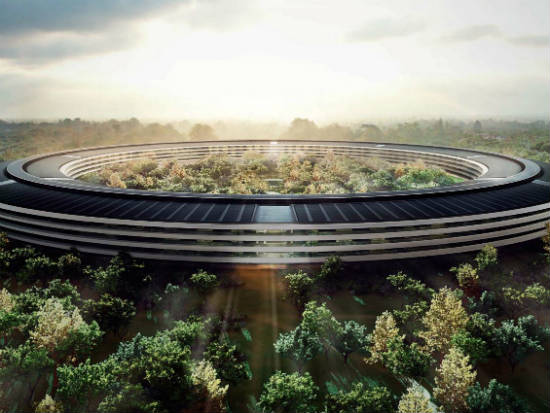News
What switching to satellite offices could mean for sustainability
Published: August 10, 2020
What switching to satellite offices could mean for sustainability Jesse Klein Mon, 08/10/2020 – 01:45
When the coronavirus pandemic started in March, many of America’s major cities experienced a mass exodus of people in search of places with more living space for home offices and outdoor areas for easier social distancing. And as many tech companies extend their work from home policies indefinitely, such as Google, which recently announced it will allow employees to work from home until July 2021, this migration could become permanent.
“There is this phenomenon that we know is happening around people leaving the major cities and going to smaller places,” said Lindsay Baker, former first chief sustainability officer at WeWork and founder of space use software app company Comfy. “People sometimes don’t choose to live in cities. They live there because they work there.”
And as employees move away, many companies are starting to reevaluate the necessity of maintaining their large corporate offices or complexes in congested, expensive places with prestigious addresses.
In June, a San Franciscan tweeted a photo of three moving trucks on the edge of the city’s financial district near Chinatown and commented that he has seen over 30 in the area. At least anecdotally, both people and companies are leaving town. They are moving out of office buildings because they don’t need them.
But even if remote work becomes the long-term norm for every company post-pandemic, humans still like to work together. There’s still a part of us that wants to physically come together to collaborate and connect. So real estate strategies may turn towards smaller neighborhood satellite offices in multiple suburban locations, instead of one massive complex that serves an entire region or, in some cases, an entire state.
These smaller satellite hubs could allow employees to come together a few times a week and supply high-speed internet and better backgrounds than a kitchen table for important meetings, while also being less crowded for social distancing concerns, giving employees shorter commutes and allowing for a quieter, more accessible outdoor environments than a typical bustling financial district location.
But what will this possible transition to smaller hubs mean for the sustainability of office buildings where building designers and office managers have spent the last decade making every last inch of a multistory building as energy- and waste-efficient as possible?
Large complexes have sustainabilities of scale
When an influential company builds an HQ, it becomes iconic and synonymous with the company’s brand and image. The most well-known ones become part of the pop culture ethos and get nicknames: The Apple Spaceship, The GooglePlex, The Salesforce Tower, The Amazon Biodomes, The Hearst Tower, The Bank of China Tower, Lloyd’s “Inside-Out Building.”
That notoriety incentivizes the company to commit to sustainable designs, technologies and programs for the highly scrutinized building. But the tenants couldn’t heavily invest in those projects without the massive number of people each building serves. And the bigger buildings could have sustainability of scale that smaller offices can’t provide.
“I think to an extent you could make a claim that a larger campus or a larger building would be more sustainable [than a smaller office] for the simple fact that you can implement different technologies that have a better ROI,” said Kyle Goehring, executive vice president of clean energy solutions at JLL.

These technologies can be as mundane as better, more energy-efficient boilers, lights, heaters, filters and air conditioners or as radical as the Salesforce Tower’s in-building blackwater treatment equipment.
“When you’ve got big buildings, you’ve got more complex, robust mechanical systems,” said Sean McCrady, vice president of Healthy Buildings, recently acquired by UL.
And larger, more complex buildings are usually staffed with teams of specialists to run them. They notice when something isn’t running efficiently and work to find solutions. Just having people around in charge of sustainability to notice when the lights on the sixth floor keep getting left on is important.
There are other sustainabilities of scale that large campus’ offer that smaller ones can’t. The Google Cafeteria, for example, works on a scale that allows for extremely sustainable operations. It uses ugly fruit, has a food waste reduction program and can serve on and wash real plates instead of using disposable ones.
“Even if I bought a Tupperware full of whatever food I had to my office, took it home and washed it in my residential dishwasher, it would have been more consumptive than what Google does,” Baker said. “Because it’s at scale.”
According to Baker, tech perks aren’t going away. Even in the time of the pandemic, employees still expect some of the same benefits they enjoyed at their large complexes. But instead of a buffet-style with real plates and a full kitchen in the complex, companies will deliver servings in disposable containers to the smaller hub locations. And with the virus still on everyone’s mind, instead of bulk ordering trail mix, nuts and candy for a bin with scope, single-serving chip bags and cookie packages will feel necessary. Sustainable cafeterias might be replaced with high-waste food delivery services.
Another factor that contributes to more sustainability investment on large corporate campuses is that they are either owned by the company or are in long-term lease agreements, sometimes up to 20 years. Both these situations give the company much more control over building decisions.
“Real estate owners will often say that the stability of long term and big leases help them to be able to make some of these sustainability improvements,” Baker said.
Almost every building expert interviewed for this story mentioned that companies and landlords are more willing to make changes if they have a steady partner to help carry the costs. There’s no point making a bunch of sustainable changes if the company plans to abandon that location in two years. Shifting to a smaller corporate office model with many businesses in each building and each company dealing with many landlords could threaten a company’s ability to influence a sustainable agenda.
Smaller satellites could shift incentives
If post-pandemic, companies decided that instead of 100,000 to 1 million square feet organized into a complex, they need 10,000 square feet in 10 separate hub locations, there are a lot more decision-makers at the table, and a lot more split incentives.
“In America, buildings are owned by one entity, managed by a different entity and occupied by another entity,” Baker said. “All of these things getting disrupted means that there’s a little bit of mayhem going on for most buildings.”
Essentially, there are more renters, more landlords, more operators and less control for any individual party, making getting anything done more difficult.
Each entity has different incentives that affect the feasibility of sustainable improvements. For example, where a tenant might see a huge advantage in installing solar panels to decrease the utility bill, the owner of the building who passes the electricity bill onto the renter doesn’t have any reason to pay for the solar infrastructure.
“Oftentimes, it’s the owner who’s really in a position of power,” Baker said. “When you have more tenants and shorter terms, split incentives become a much bigger problem, and it’s harder to get an owner to spend the money.”
Goehring agreed.
“A larger site campus may be able to put in more technologies because you have greater control over that property,” he said. “Whereas if you’re in much smaller sites and you have multiple tenants, you may not be able to implement an on-site renewable or energy-efficient solution because you’re sharing the asset with multiple parties. You may not be able to get agreement.”
Essentially, there are more renters, more landlords, more operators and less control for any individual party, making getting anything done more difficult. Adobe already has encountered this problem with its satellite offices across the globe.
“If we have a small office somewhere that we rent, we have no local control,” said Vince Digneo, sustainability strategist for Adobe. “We’re working on strategies for being able to work with landlords.”
On the other hand, the fact that the satellite offices are not as tightly controlled also could help green initiatives get off the ground. According to Baker, there’s less bureaucracy, and it could be easier to get decisions made. Moreover, in a smaller office, the people in charge might be more willing to take a chance on a change at a smaller scale. Even overhauling something simple could be a massive undertaking at a huge headquarters.
“Sometimes the best sustainability performance actually happens in the satellite offices of these big companies,” Baker said. “They were able to break down more silos faster. That stuff is sort of the bread and butter of sustainability work.”
Sustainability could thrive in a market of flexibility, pressure and competition
As corporations need less space, they have more potential locations available to hold them. According to the commercial building experts, fewer constraints, along with the pandemic exodus has created a renter’s market, forcing landlords to be more flexible to compete. To attract companies with sustainability commitments, smaller landlords that didn’t have to think about solar or efficient heating before will hopefully start making changes.
“You can influence the people who own the assets to implement solutions because if they don’t, you are going to go lease a different property or you’re going to relocate elsewhere,” Goehring said.
Baker hopes that the changing market will develop a sense of competition between landlords to be the most sustainable and be in line with the sustainable values and goals of larger companies.
That means there’s an opportunity for the massive companies that need space in many places to turn up the heat on more buildings, more regulators and more landlords in more places. With satellite offices, companies could influence sustainable policies and access to renewable energy in many areas, instead of just focusing on the one that is home to the large base.
With Adobe’s many satellite locations, it is able to put pressure on regulators in states outside of its headquarters in California. According to Digneo, Adobe was able to work with local utilities such as Portland General Electric to get renewable energy to its sites in Hillsboro, Oregon, and later in Utah.
We are still far from the end of this pandemic, and we don’t know what the long-term ramifications for our office lives will be. But the private sector is usually quick to adapt and take advantage of a changing market, and the hope is those adaptations will include more sustainable offices, whatever the size.

A rendering of Apple’s spaceship-like headquarters in Cupertino.
